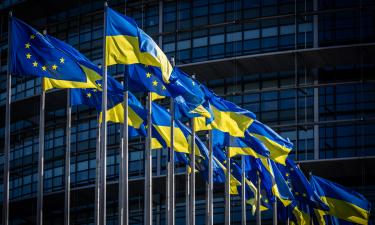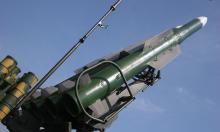The Audiovisual Symbolism of the Film Alexander Nevsky
If you watch the film Alexander Nevsky, you will never forget its vivid language and visual and musical images
Brother-crusaders in the Teutonic Order took monastic vows. Following the rules, they fasted rigorously. After visiting a Teutonic Order castle, an ambassador of  the Baltic pagans reported to his tribesmen in surprise: "Crusaders, like their war-horses, feed exclusively on grass!" They prayed and sang Gregorian Chants accompanied by pipe-organs and, in their rhymed chronicles of crusades, they glorified arms and violence.
the Baltic pagans reported to his tribesmen in surprise: "Crusaders, like their war-horses, feed exclusively on grass!" They prayed and sang Gregorian Chants accompanied by pipe-organs and, in their rhymed chronicles of crusades, they glorified arms and violence.
The Orthodox Baltic states Herzike and Kukenois were the first victims of their treacherous assault. After the destruction of Orthodoxy there, they moved to Russia. The armed Catholic missionaries put to the sword and consigned to the flames Orthodox monasteries and their monks.
If you watch the film Alexander Nevsky, you will never forget its vivid language and visual and musical images. Working on the film about the deeds of the Russian holy warrior, which was a masterpiece of sound cinema, director Sergey Eisenstein and composer Sergey Prokofiev aptly highlighted historical details that illustrated the spiritual traits of the epoch and its characters.
The main documents relating about the struggle of the Russian people against the aggression of the Teutonic Order are The Life of Alexander Nevsky and The Story of Dovmont. The researchers note a close relation the two. Intuitively (or consciously?) following the Orthodox hagiographic tradition, Eisenstein and Prokofiev used both sources.
From the Elder Livonian rhymed chronicle it is known that the invasion of the crusaders in 1240 filled the Pskov land with "great woe" (V.I.Matuzova, E.L.Nazarova. Crusaders and Russia. Late 1100s-1270. Texts, translation, commentary. Moscow, 2002). The longer version of The Story of Dovmont contains two reports about the evil-doing of the Catholics in Pskov. Demolishing Russian monasteries, the Teutonic inquisitors burned the monks alive, as well as women and children who sought refuge within the monastery walls:
"1270. And the evil Germans fell on the Pskovians and came to the town with a big army, and set the cloister of the Most-Pure Theotokos on the Snyataya hill on fire and burned Hegumen Ioasaf with the monks in the church… 1299. In March on the 4th day the Germans ravaged the town outside the Pskov walls, killed many monks and women and children, and burned monasteries".
Stories about Teutonic Knights burning monks, women and children in the Snetogorsky monastery and the Mirozh monastery in 1299 can be found in various copies of The Story of Dovmont and almost in all Russian annalistic collections (V.I.Okhotnikova, The Story of Dovmont. Study and texts, Leningrad, 1985).
Crusaders slaying Orthodox children remind us of the servants of the Egyptian Pharaoh and of King Herod described in the Bible. In the film Alexander Nevsky the passage Crusaders in Pskov, perceived in the context of The Story of Dovmont, testify that the worst enemies of the Russian people strove to destroy first of all the Orthodox shrines. It is a very significant allusion in the film, which was considered an atheistic one.
The method of integrating historical facts separated in time is justified by the genre of the film. Eisenstein and Prokofiev also used freely other historical sources of the 13th century. A very precise copy of a medieval portable organ was made specially for the film. The distinctive image of a Catholic monk in black accompanying the military actions of his knight brothers with music on a portable organ was taken from The Livonian Chronicles by Heinrich of Latvia. According to the evidence of the Order chronicler, a Teutonic priest, Heinrich by name (maybe, the very author of the chronicle), "was praying to God playing a musical instrument while the others were fighting". A monk playing an organ in the midst of the battle of the crusaders with the Ests caused surprise to the pagan tribes: "Their priest, paying little attention to the Ests' attacks, came up on the castle ramparts and, while the others were fighting, prayed to God playing a musical instrument. Hearing singing and the high-pitched sound of the instrument, the pagans (Ests) who had not heard of this in their land stopped the battle and started asking about the reason for such joy".
Heinrich of Latvia wrote that, unlike pagan Baltic peoples, both crusaders and the Russians widely used military music. Music encouraged the warriors: "The Russians gathered together their army, stroke kettle-drums and blew trumpets and the Pskov king, Vladimir, and the king of Novgorod went around their army encouraging them before the battle… The tired had no rest. During the day they fought, at night they arranged events with much shouting: the Livs and Letts shouted, striking with swords against shields; the Teutons stroke kettle-drums, played trumpets and other musical instruments; the Russians played their musical instruments and shouted loudly; all nights passed without sleep" (Heinrich of Latvia. The Chronicle of Livonia. Introduction, translation and commentary of S.A.Anninsky. 2nd edition. Publishing House of the Academy of Sciences of the USSR, Moscow - Leningrad, 1938).
Thanks to the creative genius of composer Sergey Prokofiev and poet Vladimir Lugovskoy, the theme of patriotic and military music is masterfully developed in the film about Alexander Nevsky. Eisenstein noted that in the film there are scenes where the picture was edited according to the prepared musical audio track; in some cases the music was composed after the prepared visual image. Prokofiev united musical materials into the cantata Alexander Nevsky, which consists of seven parts in accordance with the main themes of the film: Russia under the Mongol Yoke, Song about Alexander Nevsky, Crusaders in Pskov, Arise, Ye Russian People!, The Battle on the Ice, The Field of the Dead, and Alexander's Entry into Pskov. The trumpeting of a knight's horn echoes the Latin Gregorian Chant Peregrinus expectavi, about a pilgrim who instead of a pikestaff took a sword in hand. In the patriotic theme Arise, Ye Russian People! the composer included old Russian tunes and the sounds of folk instruments.
The principle of associative integration of various artistic means employed by Eisenstein and Prokofiev broadened the range of the semantic style of the film and opened the way to realizing the Orthodox sources of Russian patriotism.
Yuri Klitsenko
Russia
Subscribe to Pravda.Ru Telegram channel, Facebook, RSS!




